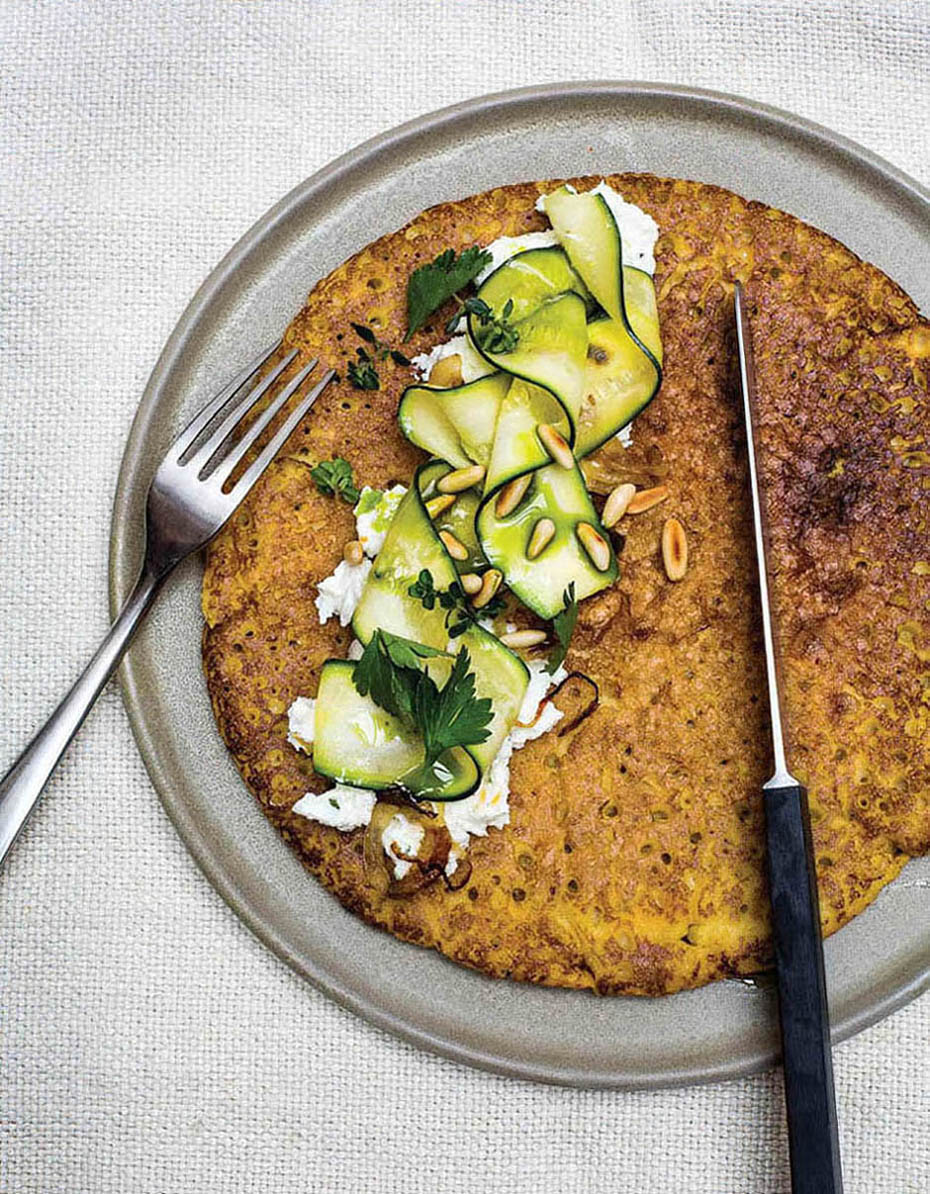![]()

Chickpea Crêpe with Fresh Goat Cheese, Zucchini Ribbons, and Toasted Pine Nuts
Panfrying—shallow frying in a small amount of fat at medium-high in a frying pan or skillet—is one of the most common cooking techniques, yet it’s often poorly executed. It’s worth taking the time to hone your panfrying skills, and you’ll really see the results with better crusts, more even and precise cooking, and less food stuck to the bottom of the pan!
Tips
• Use a heavy-duty pan made from good-quality materials that heat up at a moderate speed and distribute and maintain heat evenly, such as stainless steel, cast iron, or stainless steel lined copper. Cheap frying pans heat up too quickly and unevenly.
• When I require a nonstick surface, I go for a well-seasoned cast-iron or ceramic-coated pan.
• I prefer to panfry using extra-virgin olive oil, sunflower oil, clarified butter, or ghee, depending on which foods I am frying. There has been a lot of press demonizing cooking with olive oil at high temperatures, but the research is contradictory at best, and when in doubt, I look to history for guidance. The traditional Mediterranean diet, known as one of the healthiest diets in the world, has long fried vegetables in olive oil, with seemingly no long-term negative health effects. Olive oil can have a pungent flavor, however, so I use sunflower oil when I don’t want to distract too much from the flavor of the food I am frying. Clarified butter and ghee have very high smoke points and so make an ideal fat to panfry in, but ghee in particular has a very rich, nutty flavor that isn’t suitable for every dish.
• Ideally, food should be at room temperature and patted dry before panfrying (where appropriate), as it speeds up the Maillard reaction, the caramelizing of the sugars and proteins on the surface of the food (see more on the Maillard reaction).
• Knowing when to add your food to a hot pan is key to successful panfrying. The fat should be hot but not smoking; in the case of olive oil, look for the surface of the oil to be shimmering to know that the oil temperature is right to begin frying. Food should sizzle vigorously as it makes contact with the oil. If it doesn’t, the oil is not yet hot enough.
• Don’t be tempted to move or turn the food until one side is properly cooked and has developed a golden-brown crust. Flipping too early, before the Maillard reaction has kicked in, can result in your food sticking to the pan, and turning too much can cause more delicate foods to fall apart and will result in less caramelization.
• It’s important not to overcrowd the pan, as this will cause the oil temperature to drop and the food will steam rather than caramelize.